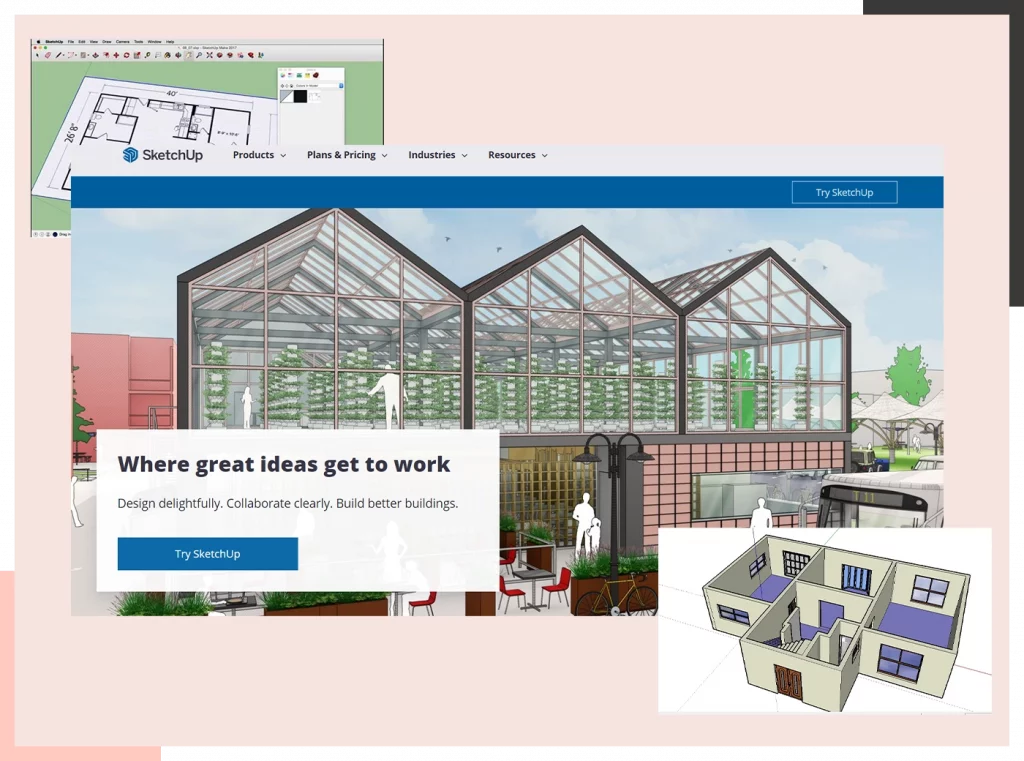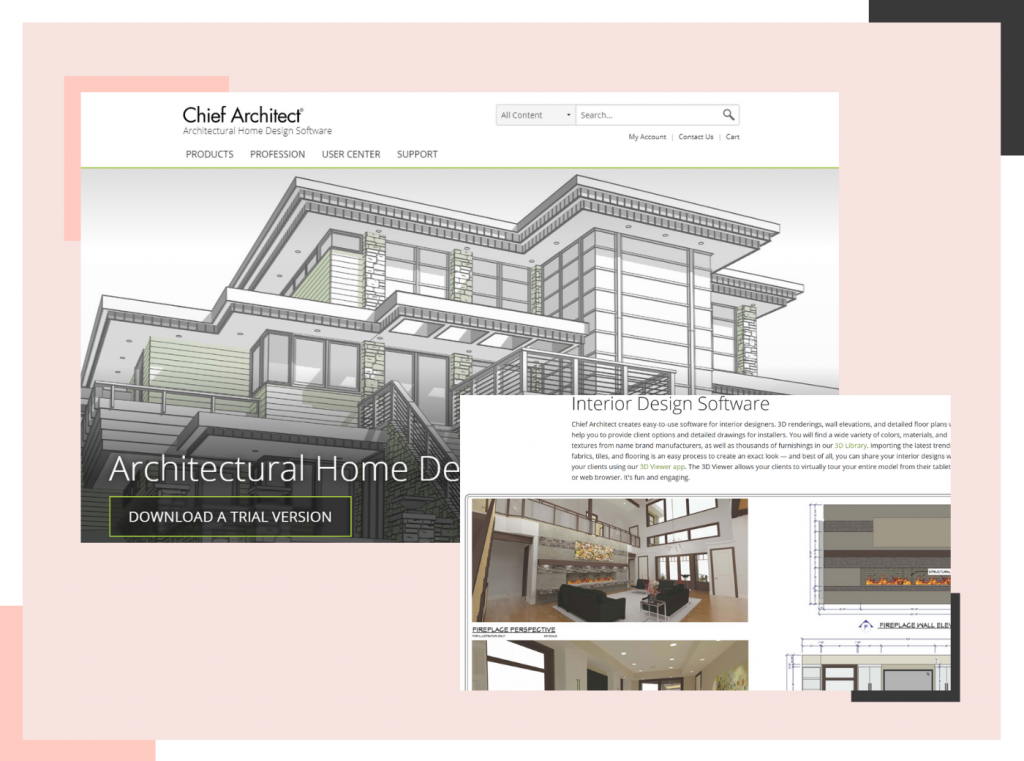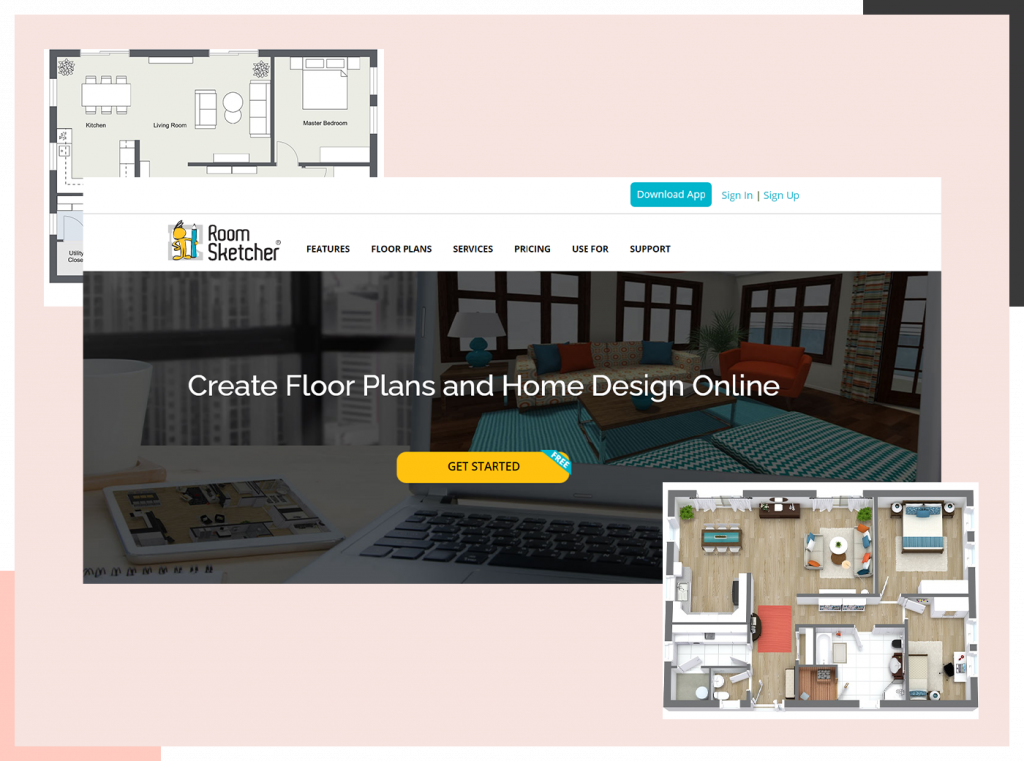Why Should You Create 3D Virtual House Tours for Your Design Projects?
10 Mins Read
March 18th, 2024
It’s the peak season for interior designers like you, and your calendar is brimming with discovery calls and presentations. One sure-shot way to get your clients to say a resounding ‘YES’ is to promise and deliver stunning virtual house tours as part of your deliverables. You know how fast VR and AR technologies are catching up fast. It’s best to be ahead of the curve and invest in a virtual house tour tool and start reaping huge ROI instantly.
In this article, we’ve put together all you need to know before buying a virtual house tour tool – what to look for, how to leverage it, and what are the best options in the market you should consider.
Jump ahead to:
|
Projects with Virtual House Tours |
Projects without Virtual House Tours |
| ✅ Clients get a real-time walkthrough of their property and interact deeply with the design | ❌ Clients can’t interact with the design |
| ✅Designers can fix mistakes or clarify client’s expectations early on since the tour is comprehensive | ❌ Easy to overlook mistakes |
| ✅ With mistakes out of the way, and design elements interacting cohesively, it’s easy to figure out which items resonate with the client, and which don’t. | ❌ Decision making takes longer than usual |
| ✅ The impact of lighting, location, texture, and finishes on the overall design can be studied, and decisions can be made quickly. | ❌ Difficult to assess how each element interacts with the overall design |
| ✅Virtual house tours look like real-time exploration of the house, so photorealistic quality only | ❌ Cartoonistic images/renders can’t translate your vision properly |
| ✅House tours can be paused at different points to get feedback, hence reducing no. of sessions, and back and forth iterations | ❌ Numerous design revisions and time-consuming process |
Given the acceptance and popularity that Foyr Neo has received from the majority of its users in a short while, it is no surprise that it is our favorite and deserves a place at the top of this list.
Foyr Neo is only available on laptops and desktops, and not on mobiles.
| Rebecca, founder and principal designer of Makemyhousehome has been using Foyr Neo for a long time. She elucidates how Foyr helps her in creating designs, “Showing how different things will look like in your client’s space, how it’ll fit into their lives and in their home is important, and Foyr helps me do that.”
She also explains how Foyr Neo eases her business workflows as well, “Clients want me to deliver at least 4 different photos of each view. Most 3D modeling tools can only give me cartoonistic images, which clients won’t be satisfied with. With Foyr Neo, I can deliver images for each view and show a clear walkthrough video, which helps me move the sales cycle faster.” |



Another popular choice among modeling programs that uphold industry standards in terms of computer graphics, 3D modeling, 3D printing, etc. is SketchUp.
Read also – 10 Best SketchUp Alternatives for Designers



An interior design exclusive tool curated by Chief Architect’s brand is Home Designer, which is a top-rated 3D software you can use for indoor and outdoor living projects. It comes with a free trial and basic plan that offers ease of use and is affordable for small businesses.
The 3D view can be fragmented easily, and viewed on a separate screen while comparing it with a 2D plan. You can render floor plans in 3D, and assess the suitability of your designs in no time. You can quickly customize the design, and change camera angles to ascertain how your well-crafted design looks from different eye levels and angles.
The flip side to this tool is that before you acquaint the current version of the tool, it gets updated which makes it difficult to understand the functionality of each feature.



One of the simplest tools to use to design floor plans and homes for simple and premium projects is Roomsketcher. It comes with a free version and also offers the leeway to use the tool on a project-to-project basis. There’s an abundance of flexibility in designs and plenty of options for you to choose from with respect to flooring, tile, furniture, etc.
Creating room structures and 3D walkthroughs of your client’s home is a breeze with Roomsketcher. You can easily see the impact of your changes on the entirety of your design without having to face several glitches along the way. The tool especially offers a virtual tape you can use to measure the distance between furniture, built-in cabinets, walkways, etc, so your design is immaculate.
The design preview serves a good purpose and highlights areas of improvement and design ideas you might to focus on before you begin rendering.
Read also – How to Use Augmented Reality to Enhance Customer Experience in Interior Design?
Gravity Sketch is a powerful VR platform that allows designers to sketch, model, and prototype their designs in a virtual environment. It offers an intuitive interface and a wide range of tools, making it suitable for beginners and professionals. Gravity Sketch also supports real-time collaboration, enabling multiple users to work on a project simultaneously.
Read also – How Can Designers Bring Realism To 3D Renderings In 2024?
IrisVR specializes in creating realistic, immersive virtual reality experiences for architectural and interior design projects. It seamlessly converts 3D models from popular design software like Autodesk Revit and SketchUp into VR-ready experiences. It also supports collaborative reviewing and markups, making it easier to gather feedback from clients.
InsiteVR is a versatile VR platform that enables designers to transform their 3D models into immersive virtual house tours. Its intuitive interface and easy-to-use tools make it accessible to designers with varying levels of expertise. InsiteVR offers features like guided virtual house tours, measurement tools, and automatic material and lighting recognition.
Read also – 8 Best Free Interior Design Software & Tools in 2024
Fuzor is a comprehensive VR and BIM (Building Information Modeling) platform that combines the power of virtual reality with data-rich 3D models. It offers real-time visualization, intelligent clash detection, and advanced simulation capabilities. Fuzor also supports multi-user collaboration and integration with popular design and construction software.
Enscape is a quick, easy-to-use VR plugin for popular design software like Revit, SketchUp, and Rhino. It allows designers to instantly convert their 3D models into immersive VR experiences without the need for complex setups or extensive training. Enscape offers real-time rendering capabilities, accurate lighting simulations, and an intuitive user interface.
Read also – Top Interior Designing Software Tools to Learn in 2024
All that you read about virtual house tours, if we wrapped up all the best, most innovative features and delivered them to you as one tool, that’s exactly what Foyr Neo is.
Are you ready to start using one tool that can take care of A-Z of your design? Sign up for Neo’s 14-day free trial now and find out for yourself!
Virtual tours often include measurements and scale indicators, giving viewers a better understanding of room dimensions and layout.
Yes, users can navigate through rooms, zoom in on details, and sometimes even interact with elements within the virtual space.
Yes, drone footage can provide stunning aerial views of a property’s exterior, offering a comprehensive perspective for potential buyers.
Yes, virtual staging allows empty properties to be digitally furnished, giving potential buyers a better sense of space and potential.
Yes, virtual tour tools like Foyr Neo offer links that can be easily shared via email, text message, or messaging apps, allowing users to conveniently share properties with others.
Using Foyr Neo is as easy as 1, 2, 3. First, upload a floor plan or create one from scratch. Then drag and drop from over 60K 3D models to fill your rooms. Lastly, just set the shot and let the AI create stunning 4K renders for you in less than 10 minutes.
Start your 14-day free trial

No Credit Card Or Download Required


Specially built for Interior Designers



